Interiors
My Guide to the Perfect Home Office
We are working from a home office with increased regularity. Whether avoiding a virus, traffic jams or simply realising that with greater advances in technology, we don't need to haul into an office in the centre of town every day. Even if you work from home for one to two days a week, it's important to have a space that you are productive in. Here is my guide to the perfect home office.
Finding the right space for your home office
Ideally you will have a dedicated room for your home office. Spreading out your files and laptop on the dining table isn't an ideal long term solution. So if you are planning to work from home on a full time or regular basis you need to consider the rooms that are available in your home. Think outside the box and consider whether you can rearrange the space that you have at home.
Clearly the most obvious solution is to turn a bedroom into a home office but if you have a large family then this isn't always possible. If you do have a spare bedroom, clever design means it doesn't have to be large.
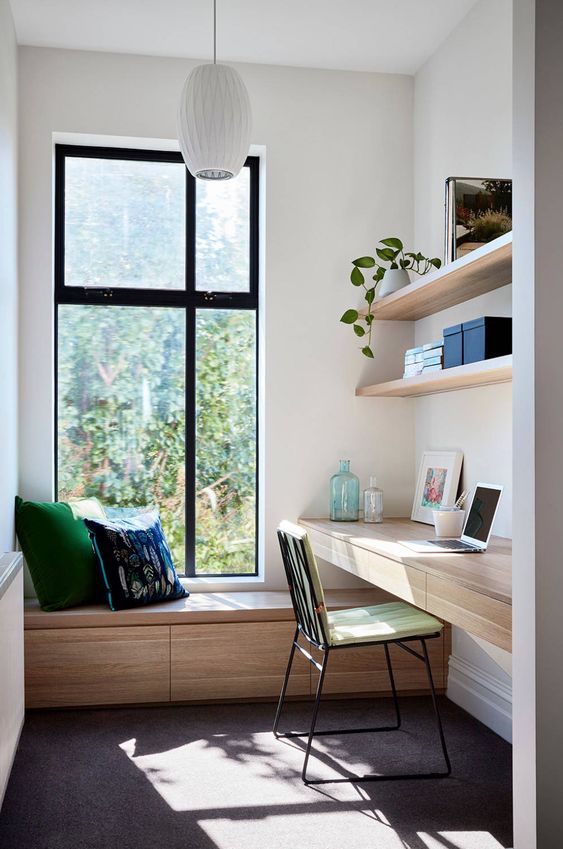
Consider whether you can undertake a small renovation to turn a large rumpus room space into two separate rooms? Or buy a sofa bed for the living room and dedicate your spare guest bedroom to a home office.
Do you just have visitors at the weekends? If so, put a sofa bed into the spare bedroom which can double up as a nice reading space. Alternatively do you have a large landing space at the top of your stairs that is just a void? This would be a perfect area to adapt into an office.
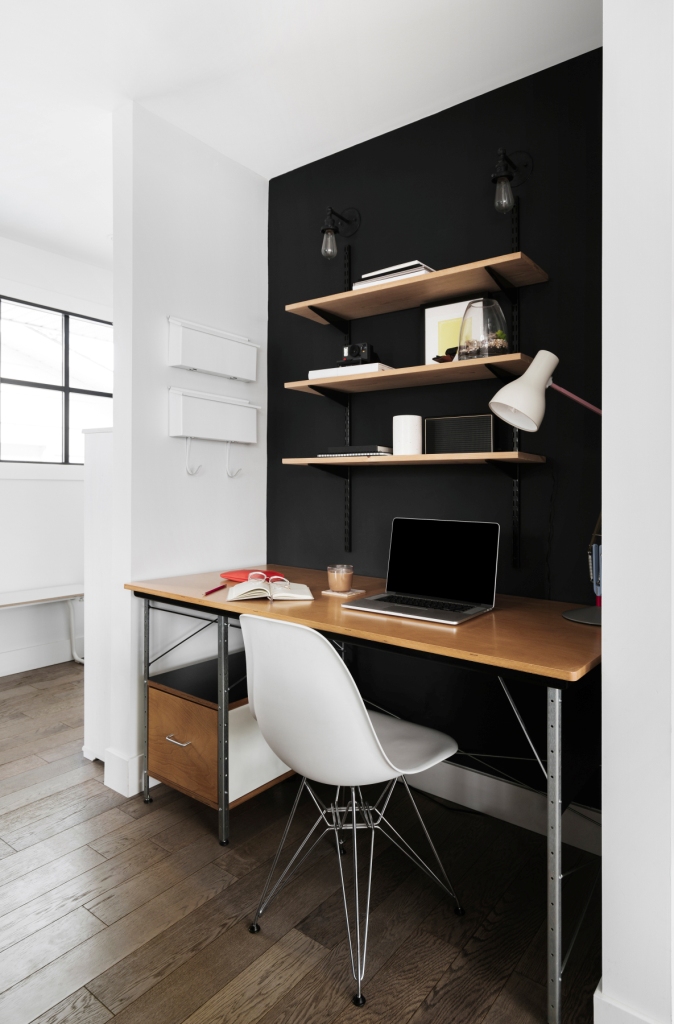
If you are an apartment dweller or your home is quite small, then you will probably find that a nook in a hallway or an open plan space may be the best place to set up your home office.
The right desk
Having the right desk that suits your individual needs is the next most important element. I have the following tips for you:
- Assess how you work and how much desk space you need. Do you have lots of files open at one time? Or do you have other folders that need to be open that you refer to. I have a large Dulux Atlas open regularly and other fan decks and samples and so I need a large amount of desk space. However if you only work with one or two files at a time, you won't need a huge amount of desktop space.
- Measure the space that you have and decide how much desk space you need. A return desk that takes up two walls of a room can work really well if you have lots of files or if you want the flexibility for a second person to set up and work at a later date.
- Desks in the middle of the room look great. You can often position these opposite a window so that you have a view. However, with this option you need to ensure that all the technology that you use is wireless so that you don't have pesky cables running across the floor.
- Ideally a desk will be 800mm deep to ensure that you have adequate space for a large computer screen or two and keyboard. You certainly don't want to be too close to your screen.
- Rather than having lots of pens and other stationery on the desk top, select a desk that has slimline drawers. Most desks are around 700mm in height but you must consider your size and height. Also consider whether you have drawers incorporated into the desk which takes up room and the chair that you use as you must have sufficient leg room space underneath the desk. Ideally you should invest in a good quality office chair that is comfortable and adjustable.

If the budget doesn't run to a built in desk and cabinetry you can still make the space work well with ready-made items.
Home office storage
My advice is to cram as much storage into the space as you can. Unless you are super organised and technologically savvy, I find that most of us still have lots of paper that needs to be stored.
For a fully functioning full-time office you will need a filing cabinet. These don't have to be the old metal serviceable cabinets if you are concerned about the look of the space. These drawers can be built into custom made furniture or you can purchase under the desk drawers that are set up to take files.
Overhead cabinetry is a good idea, or at the very least a set of shelves.
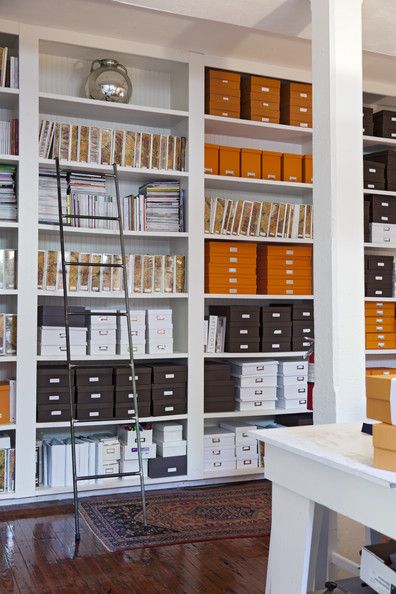
Double height bookcases with a ladder work well if you have lots of samples and documents to store.
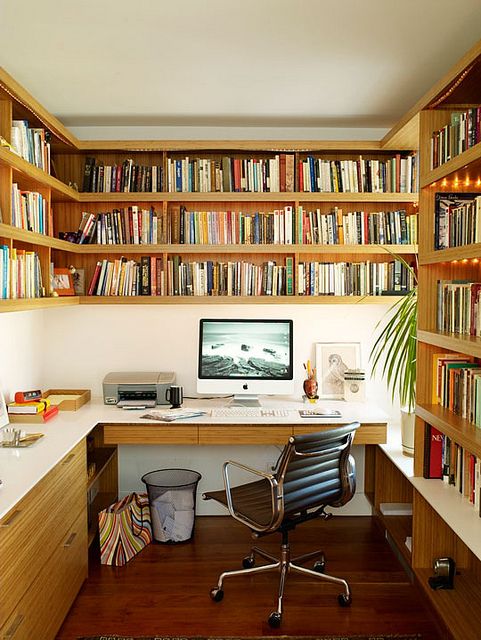
The design above has made excellent use of the space available, including shelving that extends underneath the desk. These shelves are clearly perfect for books but ensure when you are planning shelving that you take account of what you want to store there. You will need additional height and depth for lever arch folders or storage boxes.
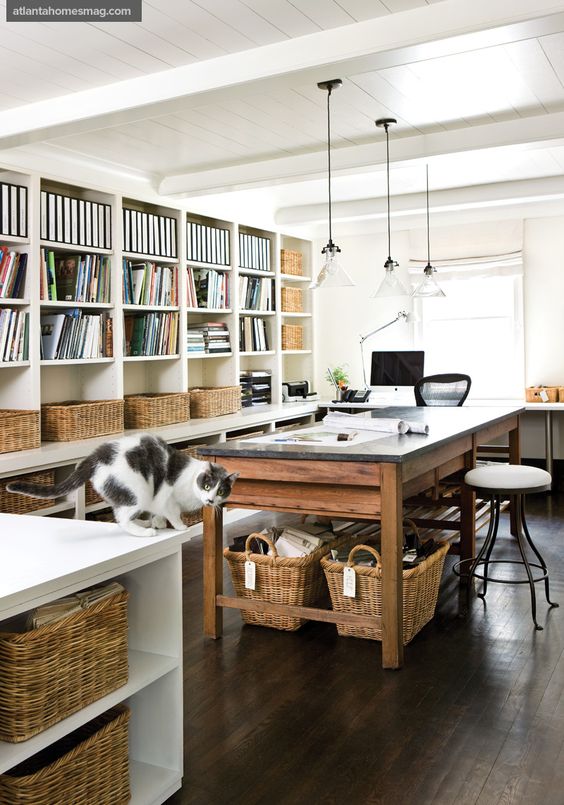
This has to be every creative's ideal office space. A good reminder too that you may have a profession where you need to spread out samples and plans. Whether you are a builder, architect or designer, an island like this can be very useful and it doubles up as a great meeting space.

If your office space is small then consider other areas in the home where you can store reference books or files. I like to use a hallway or landing space for storage and this means that a small box room could be used for just a desk, chair and printer.
Finding space for associated machinery
We all need them, but in all the beautifully styled shots on the internet, you rarely see one. I am talking about the printer. Often cumbersome and ugly, they are invariably a necessity in a home office.
If you have a large office then you can set the printer up away from your workstation. Or if you have a wireless one then it could be set up in a cupboard, away from the office. However, if these solutions don't suit, then you need to consider ways that you can accommodate the printer.
The designer of the room below, Anne Sage, has cleverly designed a cupboard with a pull out tray to hold the printer. This is a great solution as you can just reach in to get your printing or pull out the tray if you need better access to the machine. By leaving lots of space and an optional upper shelf that can be removed, you are not limiting yourself in the size of printer you can buy in the future.
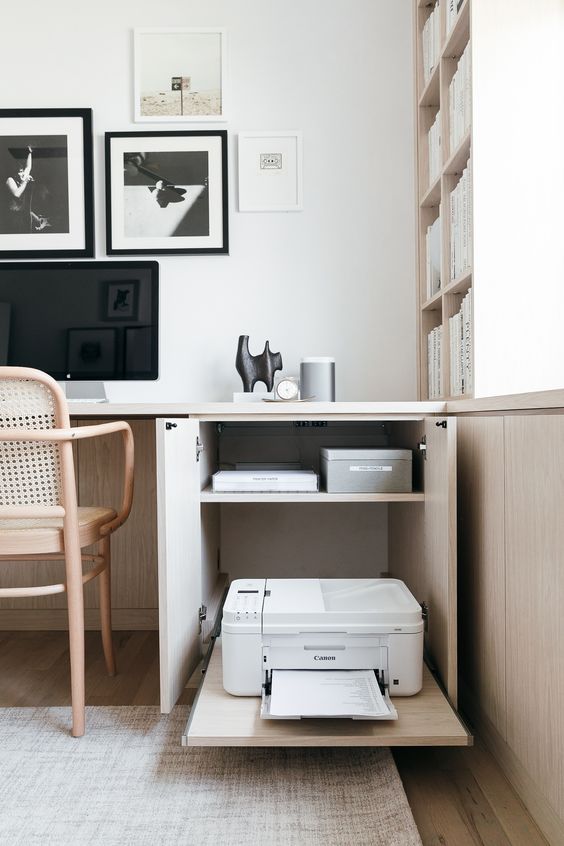
Decorating a home office
Rather than just plonk an Ikea desk and shelves into a spare bedroom and leave it at that, think about how you can make the space look good as well as being functional. Let me say now though that there is absolutely nothing wrong with Ikea office furniture. It is sturdy, practical and offers plenty of flexibility space wise. But by decorating the room and paying attention to the finishing touches, you can make it look 5 star or a dingy dump that you are not inclined to enter.
Clearly if you have the budget to accommodate custom made built in cabinetry and desks then this is the first option. However, usually you are looking at shop bought options and this is where the finishing touches can make or break the look.
Here are my tips to make your home office both functional and aesthetically pleasing:
Window dressings
These will complete the room in addition to being practical. Shutters are perfect for a home office as they have insulation benefits and allow the light into the room whilst retaining privacy. They also control the sun's glare. An important point if your computer screen is opposite a window. Shutters also look appealing and offer a great finishing touch to the room.
Alternatively a sun screen blind can work well to control heat and light and if you are a minimalist you can use them on their own. If you prefer to decorate the room more then you can add simple drapes.
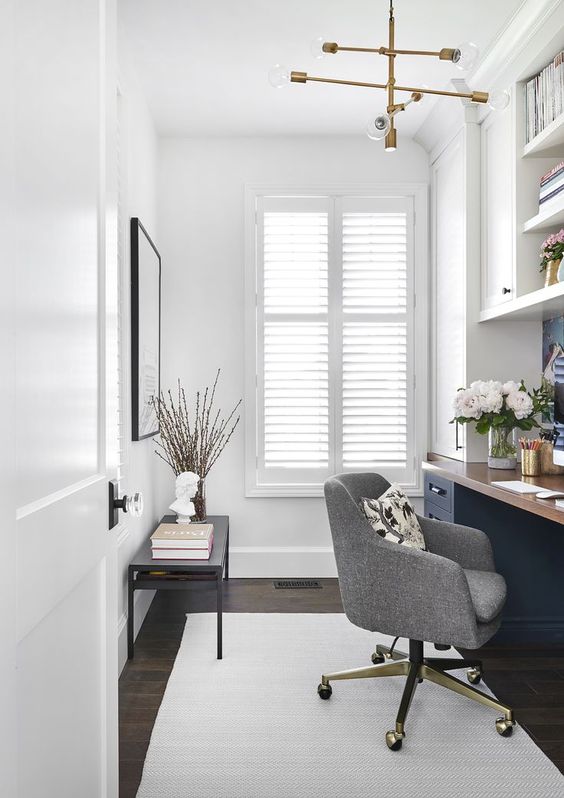
Colour and tone
If the style of your house is all bright, clean and white, you should consider either a feature colour or another colour for your home office. It can actually be very tiring to the eyes looking at a white wall, which is the last thing you need in an office environment. Computer screens, and TV screens for that matter, are much better placed against a dark wall. The screen blends into the wall rather than standing out, and again, this is less tiring and distracting on your eyes.
Rather than paint all of the walls, you can just paint one wall in the room behind the desk. I'm not a fan of feature walls unless they play a specific role. However, I do find them a very useful design tool for this kind of instance. This can be very effective if the home office is in a hallway nook as it defines the space well.
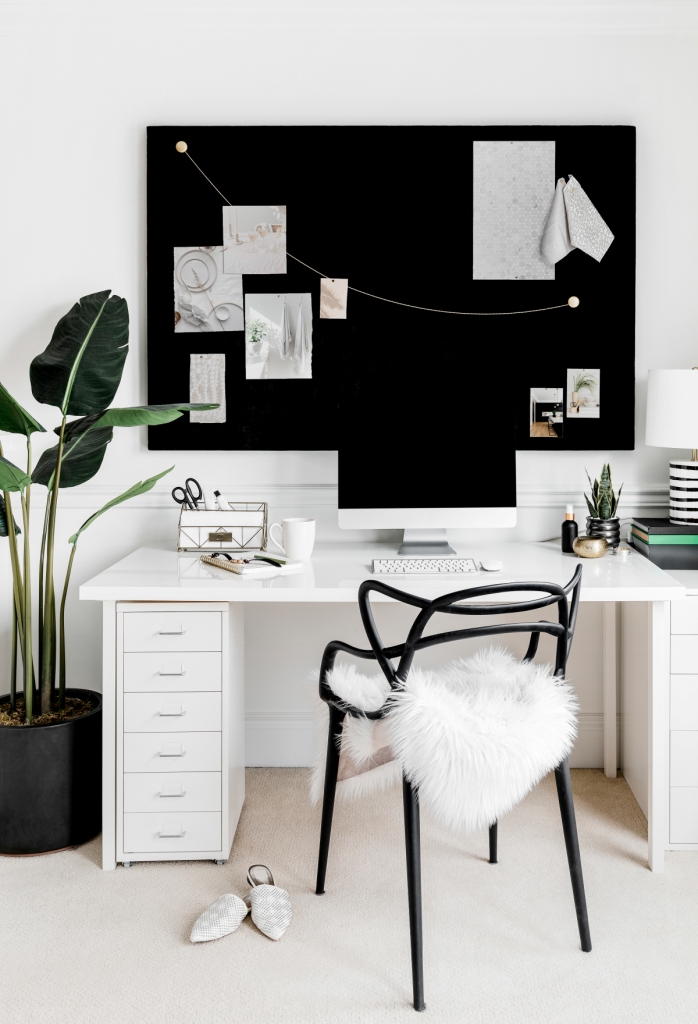
Rather than painting the wall behind your desk you could opt for darker coloured cabinetry, panelling or a darker pin board. You can see from the image above that this can also be really useful.
Related: How to work with a dark colour palette
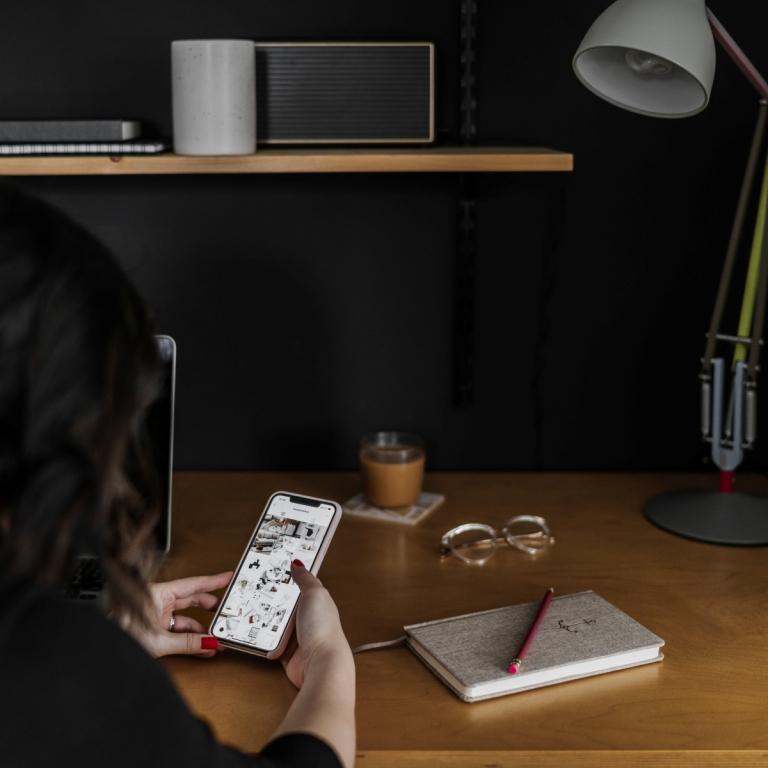
The restful colours of the spectrum, green and blue, are the best choices for a study. Ensure that you select ones that are sophisticated with a large degree of grey rather than brighter tones. Leave the bright uplifting colours as accents in artwork, cushions or rugs.
Personalise the space
Introduce artwork to personalise the room. This can be a traditional artwork or it could be an inspirational quote, if that's your thing, or framed diplomas etc. My office has moodboards on the wall and the room is very personal to me. I spend a lot of time there so it's important that it is my space.
If you have lots of awards and certificates you can display these in a gallery wall.
Related: How to put a gallery wall together
Lighting
The right lighting plan can make a statement but is also one of the most crucial practical elements to get right in the room.
With lighting for any room in the house, ensure that you have a layered plan. You need good ambient lighting, which is the overall lighting in the room. During the day this can be the natural light in a space and when this dissipates it is the lighting provided by ceiling lights – downlights etc.
In addition to this and the most important element for a home office, is task lighting. This can be a good quality desk lamp and a similar style floor lamp if you have an additional reading chair in your office. You may also like to consider accent lighting if you want to highlight an artwork or collection of artworks in the room.
If you do have overhead cabinets then you can install LED strip lighting on the base to flood your desk with light.
Electrical planning
To avoid lots of long cables and power boards on the floor, carefully consider the location of your power points. If you are setting up in a bedroom and don't want to invest a lot of money then determine your desk and printer location in relation to the sockets already installed. If you are starting from scratch, then I recommend the following:
Install double power points at several locations. You may need an electrical socket for printers, scanners, computers, desk lights, charging of laptops, modems, mobile phones and tablets and possibly more.
Don't necessarily install them all at skirting board level. If you have a built in desk unit then you can have cables fed through the desk top. Many desks that you buy will also have this feature that can be plugged if not used. However there may be instances where rather than scramble underneath your desk, it may be more useful to have easy access to the power point. In this case, they should be installed above the desk so that you can easily plug in your phone, tablet or laptop to be recharged.
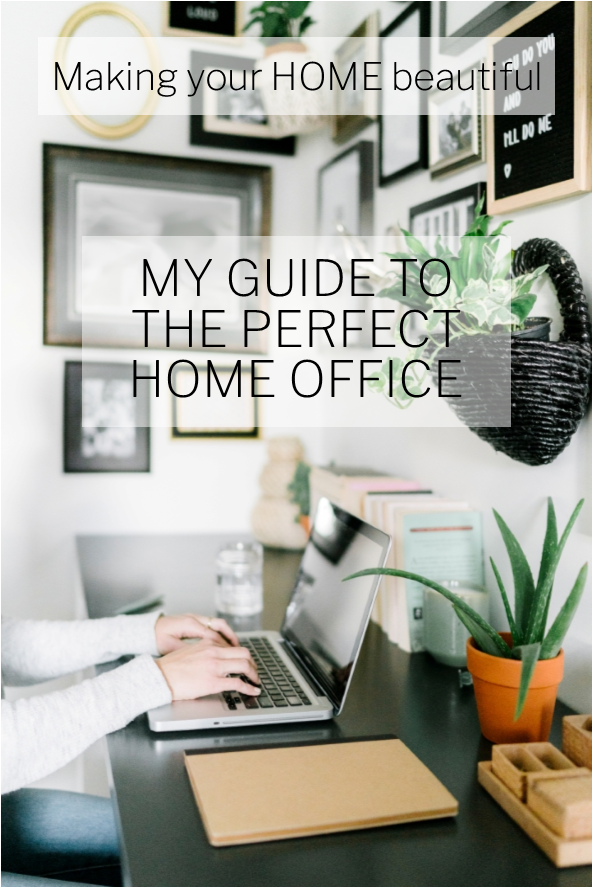
I hope this has helped you with your planning and ideas for a home office or a home office nook. A while ago now I wrote a post that you may find useful about The creative's home office
Also related is my post on My 10 favourite media nooks. This will give you some inspiration if space in your home is at a premium. Don't forget to stay healthy in your work space you should include some greenery. Find out why indoor plants are good for your health and why every office should have one.
I have lots more free advice in my FREE Resource Library. With e-books and checklists to help you plan a renovation or decorating project, you can sign up for free here.

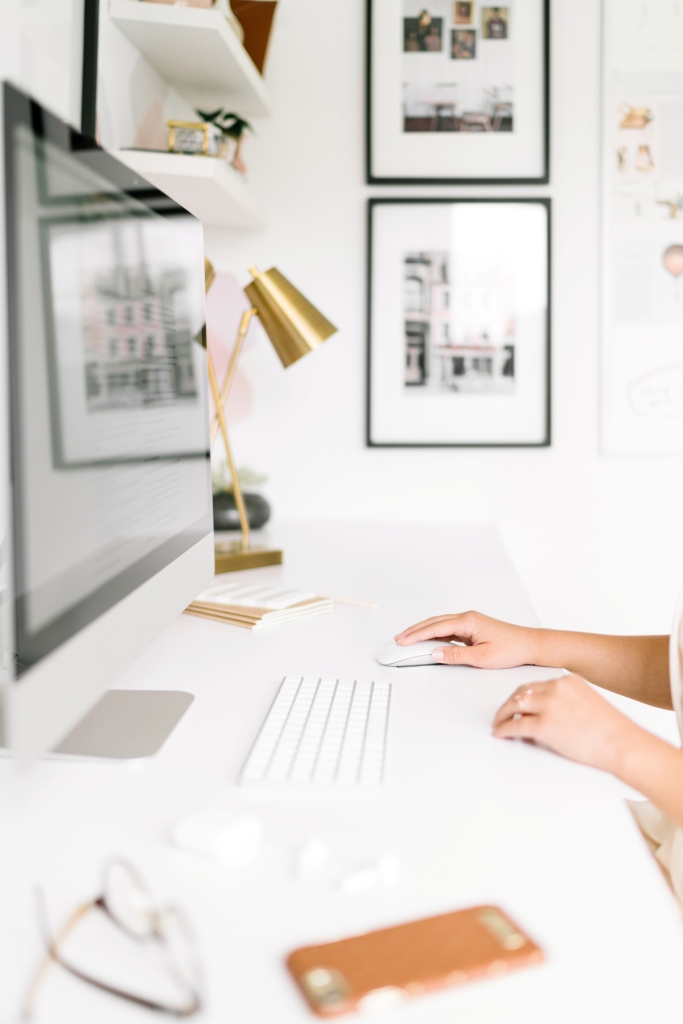
Love these observations for a good office. I recently moved my office due to the pandemic, unfortunately I no longer have a garden view & missing it greatly. Did not realise how much I looked at it & the distance helped exercise my eye focus.
Thanks Kate – a view does really make a difference to a home office. I have a very old post – A place to write. Perhaps if you read it you will rearrange your house! https://www.makingyourhomebeautiful.com/a-place-to-write/
I’m in the process of fitting out my 2.3m x 2.8m home study and will be using mostly Ikea products. I bought an oak veneer benchtop and cut it down to fit from one end of one wall to the other. Together with two 3 drawer pedestals to support it, has come up a treat. On the rear wall, I’ve put two Brimnes wall cabinets with glass shelving which can house ring binders, books and decorative pieces. I’ll buy some small Ikea storage containers to fit the shelves for smaller items. Above the desk I’ll put up some floating shelves for photos, etc.